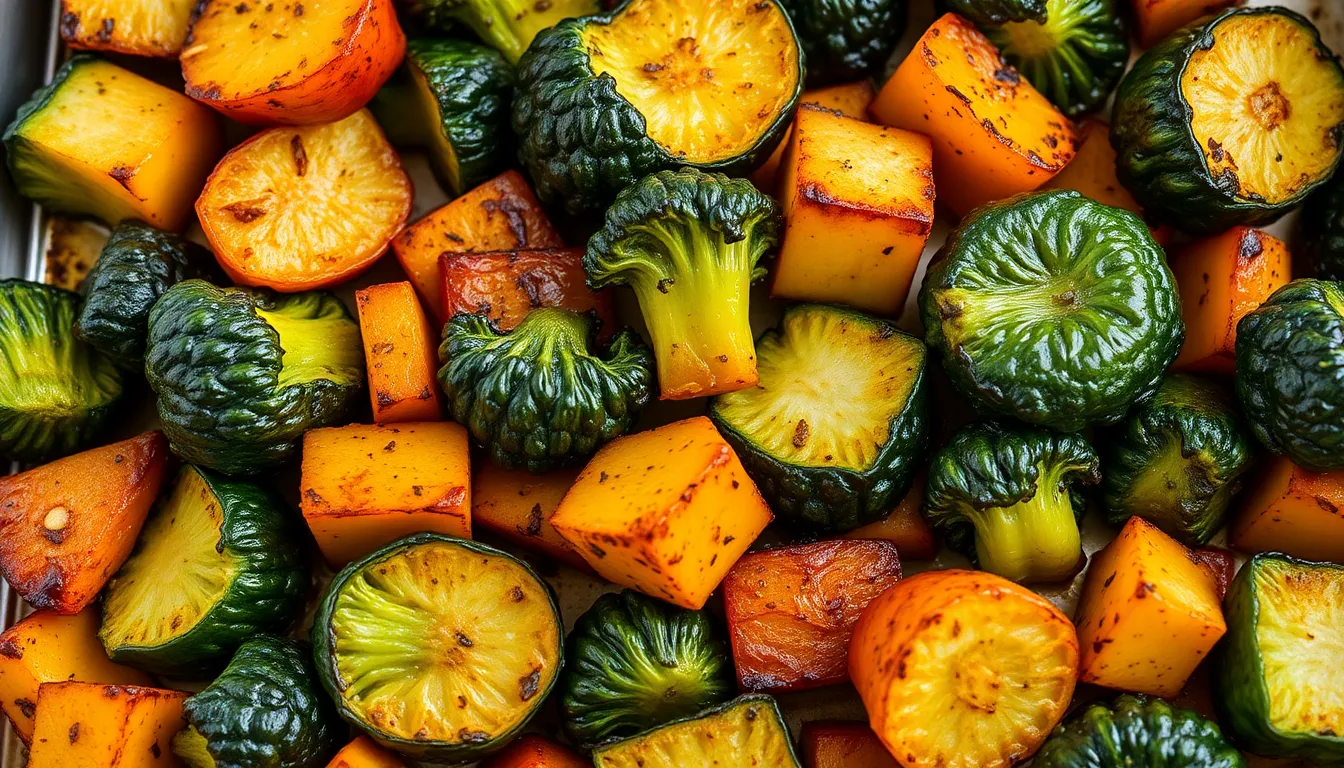body { font-family: Arial, sans-serif; line-height: 1.6; }
h1, h2, h3 { color: #d35400; }
table { width: 100%; border-collapse: collapse; margin: 20px 0; }
th, td { border: 1px solid #ddd; padding: 8px; }
th { background-color: #f2f2f2; }
ul { margin: 10px 0; }
Roasting Vegetables: A Guide to Perfectly Caramelized Goodness
There’s something magical about roasting vegetables. It transforms humble ingredients into a symphony of flavors, textures, and colors. The process of caramelization not only enhances the natural sweetness of the vegetables but also adds a depth of flavor that makes them irresistible. In this guide, we will delve into the benefits of roasting vegetables, how to choose the right ones, the preparation techniques, and the roasting process itself. By the end, you’ll be equipped with all the knowledge needed to achieve perfectly roasted vegetables every time.
Section 1: Benefits of Roasting Vegetables
Incorporating roasted vegetables into your diet comes with a plethora of health benefits. They not only provide essential nutrients but also turn meals into delicious culinary experiences.
- Health Benefits: Roasting vegetables preserves their vitamins and minerals while also providing a good dose of fiber. The caramelization process can also make certain nutrients more bioavailable, meaning your body can absorb them more effectively.
- Flavor Enhancement: Roasting brings out the natural sugars in vegetables, allowing them to caramelize and develop deep, rich flavors. The Maillard reaction that occurs during roasting adds complexity and a satisfying taste that makes vegetables enjoyable, even for the pickiest eaters.
- Seasonal Variety: Different vegetables shine in different seasons. From root vegetables in the fall to summer squashes, knowing which vegetables are seasonal can help you create a vibrant and colorful roasted dish.
Section 2: Choosing the Right Vegetables
Sub-section 2.1: Best Vegetables for Roasting
Not all vegetables are created equal when it comes to roasting. Some develop better textures and flavors than others. Here’s a list of some of the best vegetables to roast:
- Carrots
- Brussels Sprouts
- Potatoes
- Bell Peppers
- Cauliflower
- Asparagus
- Sweet Potatoes
- Red Onions
Sub-section 2.2: Vegetables to Avoid
While many vegetables are perfect for roasting, some just don’t hold up well. It’s best to avoid the following:
- Lettuce
- Cucumbers
- Radishes
- Spinach
- Tomatoes (though they can be roasted, they tend to lose their structure)
HTML Table: Best vs. Worst Vegetables for Roasting
| Best Vegetables | Vegetables to Avoid |
|---|---|
| Carrots | Lettuce |
| Brussels Sprouts | Cucumbers |
| Potatoes | Radishes |
| Bell Peppers | Spinach |
Section 3: Preparing Vegetables for Roasting
Sub-section 3.1: Washing and Cutting Techniques
Proper preparation is key to achieving even roasting. Here’s how to ensure your vegetables are ready for the oven:
- Washing: Rinse vegetables under cold water to remove any dirt or pesticides. Use a vegetable brush for those with thicker skins like potatoes or carrots.
- Cutting: Cut vegetables into similar sizes to ensure they cook evenly. For example, quarter Brussels sprouts and cut carrots into sticks about the same thickness.
Sub-section 3.2: Seasoning Essentials
Seasoning is what elevates roasted vegetables from good to extraordinary. Here are some essentials:
- Oils: Use oils with high smoke points, like olive oil, avocado oil, or grapeseed oil. These oils help achieve a crispy texture without burning.
- Spices: Experiment with spices such as cumin, paprika, and turmeric for added flavor. Fresh herbs like rosemary, thyme, and oregano can also enhance the natural taste of the vegetables.
- Salt and Pepper: Don’t skip these! They are essential for bringing out the flavors. Use kosher salt and freshly cracked black pepper for the best results.
- Garlic: Roasted garlic adds a rich flavor to vegetables. You can toss whole cloves in with the vegetables or mince them for a more intense flavor.
Section 4: The Roasting Process
Sub-section 4.1: Preheating the Oven
The success of your roasted vegetables starts with a properly preheated oven. The right temperature is crucial for achieving caramelization:
- Temperature: Most vegetables roast best at temperatures between 400-450°F (200-232°C).
- Even Heating: Ensure that your oven is fully preheated for at least 15-20 minutes before placing the vegetables inside.
Sub-section 4.2: Roasting Times and Techniques
Roasting times vary depending on the type and cut of the vegetable. Here’s a guide to help you:
- Tossing: Halfway through the cooking time, toss or flip the vegetables. This helps them brown evenly and prevents sticking.
- Checking for Doneness: Veggies should be fork-tender and have a golden-brown exterior. If they’re not browning, give them a little more time.
HTML Table: Roasting Times and Temperatures
| Vegetable | Temperature (°F) | Roasting Time (Minutes) |
|---|---|---|
| Carrots | 425 | 25-30 |
| Brussels Sprouts | 400 | 20-25 |
| Sweet Potatoes | 425 | 30-35 |
| Cauliflower | 425 | 25-30 |
Conclusion
Roasting vegetables is one of the simplest yet most rewarding cooking techniques you can master. The caramelization process transforms the natural flavors of vegetables, making them a delightful addition to any meal. By choosing the right vegetables, prepping them properly, and following the roasting process outlined in this guide, you can enjoy perfectly caramelized goodness every time.
So, preheat your oven, gather your favorite seasonal vegetables, and get ready to enjoy the deliciously sweet and savory flavors that only roasting can provide. Happy roasting!




